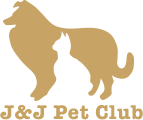As the world has evolved over the past few decades, we at J & J PET CLUB, Canada's go-to online pet food and supplies store, understand the adaptations humans and their furry companions have made. Despite living primarily indoors, our dogs have retained many of their wild instincts, including their natural dietary habits. Therefore, transitioning your dog to a raw diet can be a fairly straightforward process, especially with the right guidance.
The Advantages and Disadvantages of a Raw Dog Diet
Opting for a raw diet for your dog comes with numerous benefits, including:
- Strengthening the immune system
- Reduction in stool volume and odor
- Healthier skin and a shinier coat
- Increased energy levels
- Improved dental health
- Healthier reproduction
- Providing a more natural alternative to commercial kibble
However, it's important to note potential risks associated with a raw dog diet. These include potential choking hazards from raw bones, contamination risks from raw meat bacteria that can harm both dogs and humans, as well as possible digestive issues such as diarrhea and bowel obstructions.
This is why transitioning to a raw diet should be done gradually and with thorough understanding of your pet's needs.
Transitioning to a Raw Dog Diet
When considering a raw diet for a new puppy, you can start them off right away. If you're transitioning an adult dog from kibble to a raw diet, the process needs to be more gradual.
Introduce one raw protein at a time and avoid mixing it with kibble. This is because the digestion process for kibble requires a lower PH level than that for raw meats. Consequently, mixing these can cause the meat to take longer to digest, potentially leading to harmful bacterial growth.
By introducing proteins gradually, you can observe your dog's reaction to each protein source and determine which ones are best for their digestive system.
Balancing Phosphorus and Calcium in a Raw Dog Diet
It's crucial to balance phosphorus and calcium ratios in a raw dog diet. These nutrients play a vital role in developing healthy bones, teeth, and maintaining balanced metabolism. Opt for meaty bones like turkey necks, chicken backs, and feet as they are excellent sources of these nutrients. Whole eggs with shells, and entire animal carcasses, such as quail or rabbit, also provide balanced nutrients.
Including Organ Meats in a Raw Dog Diet
Organ meats like tripe contain essential nutrients that are absent in muscle meat. However, as they can cause loose stools, introduce these meats moderately, and mix them with other proteins instead of serving an entire organ meat meal.
Seeking Guidance on a Raw Dog Diet
Before transitioning your pet to a raw diet, do ample research and consider joining chat groups or forums to learn from others' experiences. At J & J PET CLUB, we are here to provide advice and tips to ensure a cautious yet appropriate transition to a raw dog diet, enhancing your dog's health and dietary experience.

